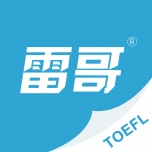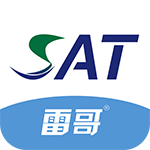Text 4
Catering to seniors, Britain’s Saga Group believes that older isn’t just wiser, but more profitable, too.
One key to a happy retirement is the means to enjoy it. Roger de Haan ended up with more than enough money to bankroll his golden years when he decided to retire and sell Saga Group, his family’s business, in late 2004. The British travel, media and financial-services company that targets older consumers attracted several major bidders, with London private-equity firm Charterhouse ultimately paying $2.4 billion. Not bad for what Not bad for what De Haan's father started 53 years earlier as a modest operator of guest hotels and tours in the English seaside resort of Folkestone.
What attracted Charterhouse and its rivals was Saga’s market strength in Britain’s fastest-growing consumer demographic: the over-50 set. And, its bet is paying off. Saga’s pretax earnings in its last fiscal year were up 20% to about $259million on revenues of $1.3 billion. Last autumn, Saga refinanced nearly $2 billion of debt better terms, and ahead of schedule, allowing it to save $59 million a year in interest payments. Moreover, Saga’s travel service recently added a third cruise ship to its fleet, and Saga Magazine now has more than 600,000 subscribers, making it the 10th most widely circulated U.K. title.
While most businesses worship at the altar of youth, Saga realized early on that there’s often more money to be made from the mature. Marketers have traditionally shunned older consumers, preferring to aim their pitches at a younger audience which hopes to groom into lifelong customers. But Tim Bull, Saga's group marketing director, says mature consumers are just as eager to buy as youngsters, though they are savvier and more discerning. They are also richer---much richer. “They control 80% of the nation' s wealth and they’re very happy to spend it,” says Fiona Hought, managing director of Millennium, a British ad agency that specializes in selling to oldsters.
The rise of the silver spender is not confined to the U.K., of course. The trend is the same across Europe and beyond. Within five years, about one-third of the U.S. population will be older than 50, and consumers in that age bracket currently own 65% of the net worth of all householders. But as a commercial company entirely focused on aging consumers, Saga remains unique. The U.S.’s AARP, for example, also sells products and has a magazine, but it’s a nonprofit group more interested in public policy and political lobbying. So as business look for opportunities to court older buyers, they are increasingly turning to Saga for advice. It’s got partnerships with a growing number of companies eager to attract the “gray pound”, including Hilton hotels, Hertz and David Lloyd Leisure, a chain of health clubs. “They have the products older people want, but are not sure how reach them. It’s a good business model for us,” Bull says.
Though Saga remains best known for its travel services and magazine, four-fifths of its revenues now come from financial services, particularly insurance.
37. It can be inferred from the passage that .

















 预约成功!
预约成功!
















